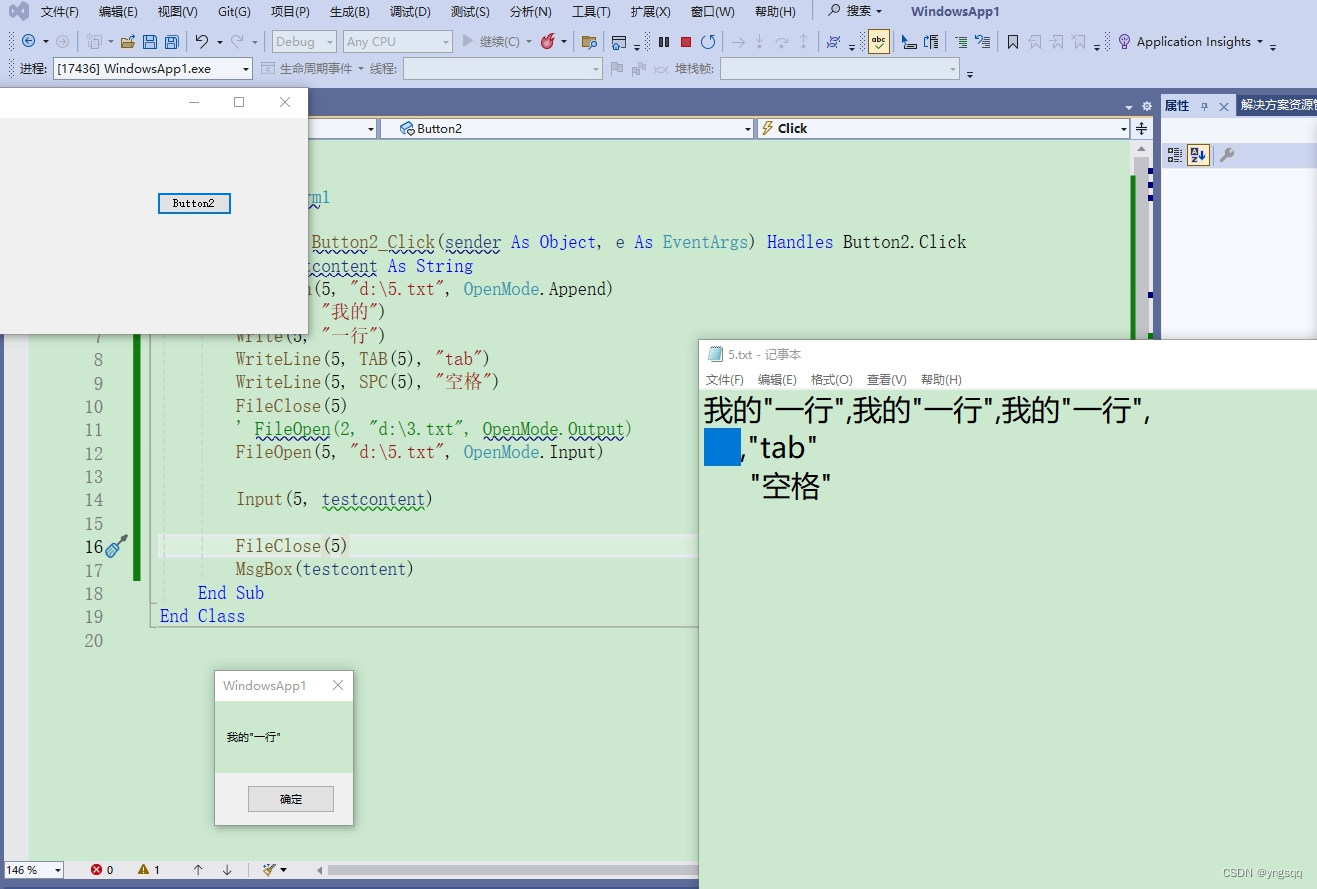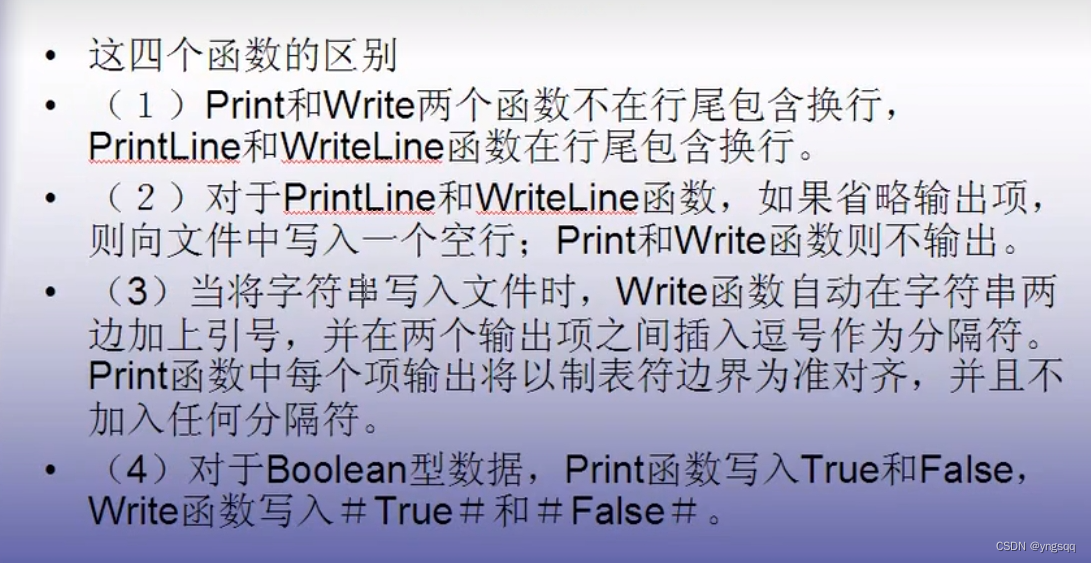此实例为在指定路径下创建一个txt文本文件,在文本文件内输入文字,并弹窗显示输入文字,代码如下:
Public Class Form1Private Sub Button2_Click(sender As Object, e As EventArgs) Handles Button2.ClickDim testcontent As StringFileOpen(5, "d:\5.txt", OpenMode.Append)Print(5, "我的")Write(5, "一行")WriteLine(5, TAB(5), "tab")WriteLine(5, SPC(5), "空格")FileClose(5)' FileOpen(2, "d:\3.txt", OpenMode.Output)FileOpen(5, "d:\5.txt", OpenMode.Input)Input(5, testcontent)FileClose(5)MsgBox(testcontent)End Sub
End Class运行结果:


vb中打开文件为open函数,在vb.net中,函数改为fileopen。


此示例演示函数的各种 FileOpen 用法,以启用文件的输入和输出。
以下代码在Input模式下打开文件TestFile。
VB复制
FileOpen(1, "TESTFILE", OpenMode.Input)
' Close before reopening in another mode.
FileClose(1)
本示例仅在 Binary 模式下打开文件以执行写入操作。
VB复制
FileOpen(1, "TESTFILE", OpenMode.Binary, OpenAccess.Write)
' Close before reopening in another mode.
FileClose(1)
以下示例在 Random 模式下打开文件。 文件包含结构 Person的记录。
VB复制
Structure Person<VBFixedString(30)> Dim Name As StringDim ID As Integer
End Structure
Public Sub ExampleMethod()' Count 30 for the string, plus 4 for the integer.FileOpen(1, "TESTFILE", OpenMode.Random, , , 34)' Close before reopening in another mode.FileClose(1)
End Sub
此代码示例在 Output 模式下打开文件;任何进程都可以读取或写入文件。
VB复制
FileOpen(1, "TESTFILE", OpenMode.Output, OpenAccess.Default, OpenShare.Shared)
' Close before reopening in another mode.
FileClose(1)
此代码示例在 Binary 读取模式下打开文件;其他进程无法读取文件。
VB复制
FileOpen(1, "TESTFILE", OpenMode.Binary, OpenAccess.Read,OpenShare.LockRead)





图像处理之马赛克)
)




![P6160 [Cnoi2020] 向量](http://pic.xiahunao.cn/P6160 [Cnoi2020] 向量)
*/)

)



